Our Verdict
The Garmin Forerunner 165 is Garmin’s most affordable AMOLED sports watch yet, and while it is missing a couple of useful features included on more expensive watches like the Garmin Forerunner 265, it does the essentials well and is one of the best sports watches available.
For
- AMOLED display
- Impressive battery life
- Music storage (165 Music only)
- Breadcrumb navigation
Against
- No dual-band GPS
- Inaccurate HR tracking
- No triathlon mode
You can trust Coach
The Garmin Forerunner 165 is a new AMOLED option within Garmin’s extensive range of sports watches, coming in significantly cheaper than the Garmin Forerunner 265, though it’s not as affordable as Garmin’s true entry-level running watch, the Garmin Forerunner 55.
While you miss out on some useful features that are on the Forerunner 265 (and indeed the non-AMOLED Garmin Forerunner 255) like a triathlon mode and dual-band GPS tracking, the Forerunner 165 is an excellent option for runners who want a watch with an AMOLED screen. It’s certainly one of the best running watches available, and I’d say the only better-value options are non-AMOLED watches like the Coros Pace 3 and Garmin Forerunner 255.
Garmin Forerunner 165: Price And Availability
The Garmin Forerunner 165 launched in February 2024 and costs $249.99/£249.99 for the standard version of the watch, while the Garmin Forerunner 165 Music is $299.99/£289.99. It is available to buy now from Garmin US and Garmin UK and ships in five to eight weeks.
This is considerably cheaper than the Garmin Forerunner 265, which is $449.99/£429.99, and also cheaper than the Forerunner 255’s list price, though as an older watch it’s usually possible to find the 255 in sales for a lot less. Our coverage of 2023’s Black Friday Garmin deals found it for as low as $299.99.
How I Tested This Watch
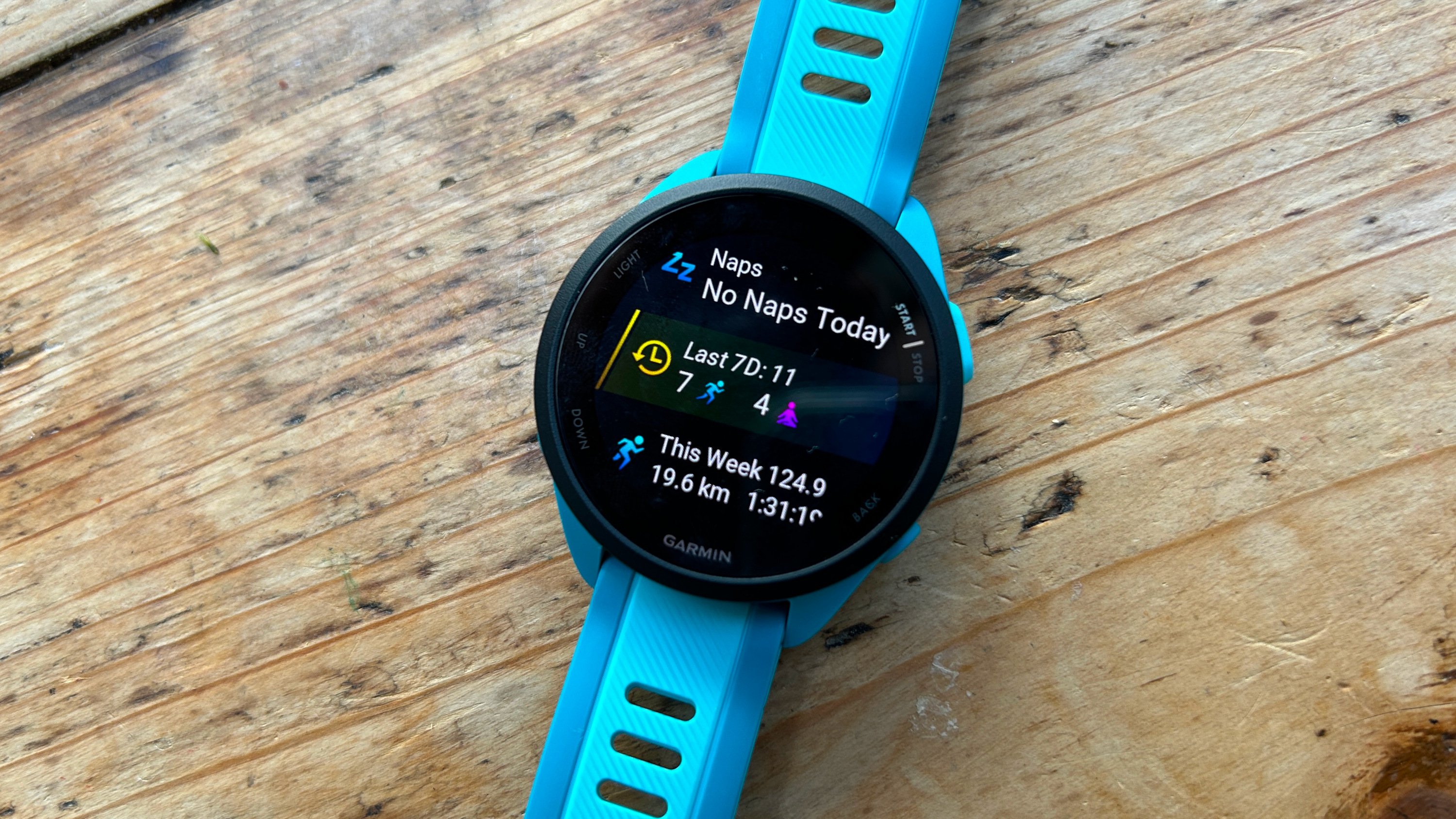
I have been wearing the Garmin Forerunner 165 Music for two weeks, using it to track around 150 miles of running in that time along with other workouts including yoga and strength sessions. During that time I also wore the Garmin Epix Pro linked with a Polar H10 heart rate monitor to check the GPS and HR accuracy of the Forerunner 165. I have also tested the rest of Garmin’s Forerunner range, and all the best sports watches on the market.
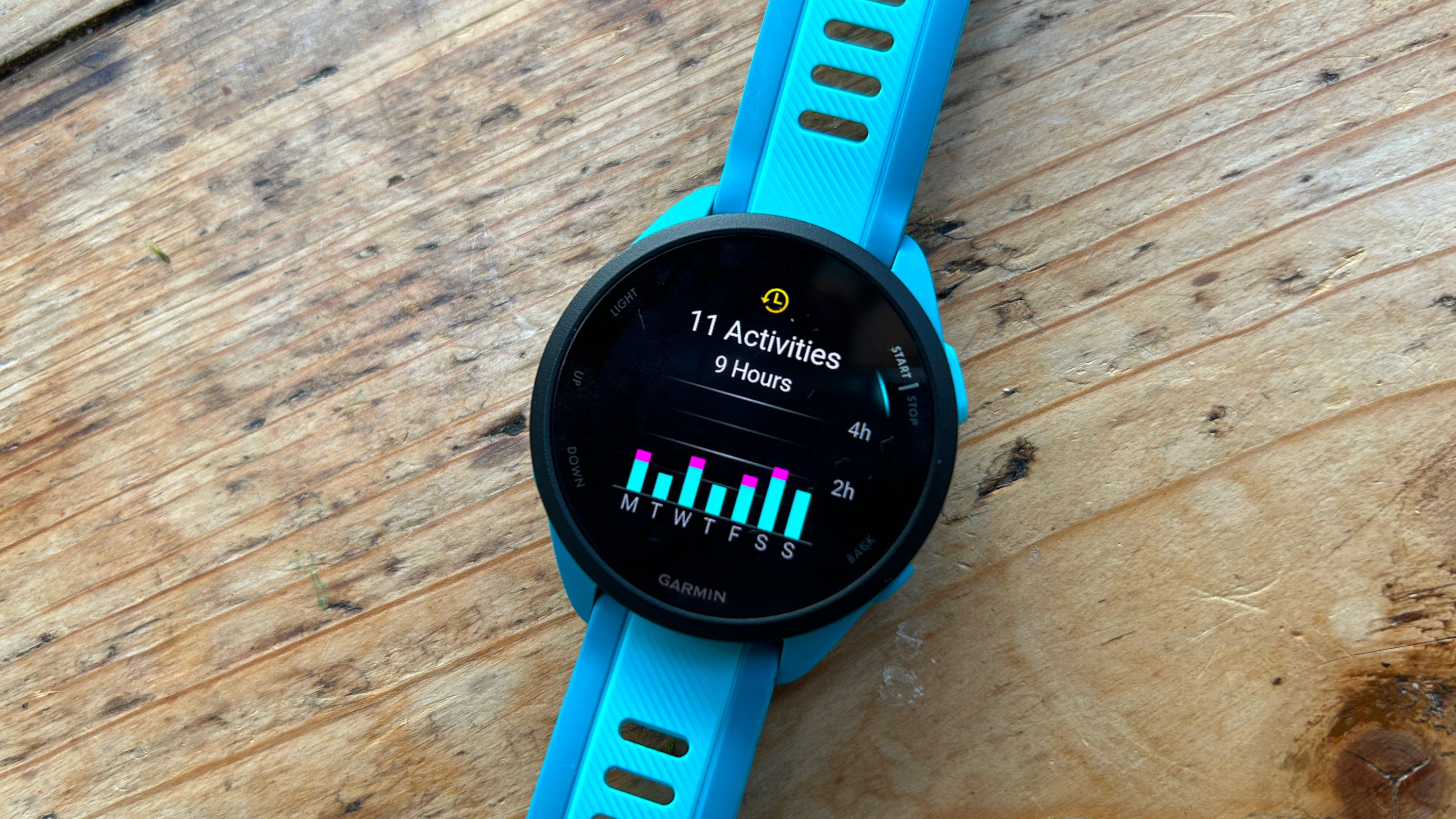
Design And Hardware
The star feature of the Forerunner 165’s design is the 1.2in AMOLED display, which is as bright and vibrant as the screens on other AMOLED Forerunner watches such as the 265 and 965. The watch has Garmin’s usual five-button set-up, with two buttons on the right side and three on the left, and you can also use the touchscreen to navigate its menus. The screen is made from chemically strengthened glass rather than the Gorilla glass used on the Forerunner 265.
Unlike the Garmin Forerunner 255 and 265, the Forerunner 165 only comes in one size, which sits between the 265 and 265S sizes. The only differences between the 165 and 165 Music are the music feature and audio prompts during workouts on the latter.
Sign up for workout ideas, training advice, reviews of the latest gear and more.

It is a small and light plastic watch that I found comfortable to wear at all times. It uses a 20mm band, which you can replace on the watch easily, either with another Garmin strap or a third-party band.
The watch uses Garmin’s Elevate V4 optical heart rate sensor, which is not the latest Elevate V5 sensor found on watches such as the Garmin Fenix 7 Pro and Epix Pro. It has a barometric altimeter for elevation tracking during activities and counting your floors climbed each day, and also has a pulse oximeter for measuring blood oxygen saturation.
You can link to external sensors via both Bluetooth and ANT+, but the Forerunner 165 won’t connect to cycling power meters, which marks it out as a running watch rather than one aimed at triathletes or cyclists.
Sports Tracking And Training Analysis
The Garmin Forerunner 165 is not a triathlon watch with a dedicated multisport mode, but it does have sports modes to cover pretty much everything else, including pool and open-water swimming and a dedicated track run mode.
It will offer suggested workouts each day based on your past training, and you can link the Forerunner 165 with a Garmin Coach training plan for a 5K, 10K or half marathon, which will be customized to your fitness level and goals. It’s also easy to create and add your own structured workouts to the watch to follow on your wrist, and the Forerunner 165 can measure running power and running dynamics like ground contact time from the wrist without needing to link up with an external sensor.
The training analysis on the watch is not as extensive as on the Forerunner 265, which has Garmin’s training readiness stat and gives you your training status, but the Forerunner 165 does estimate your VO2 max and recovery time after a workout. It will also tell you the aerobic and anaerobic training effect of your run, as well as predicting your race times for 5K, 10K, half marathon and marathon distances.
During workouts the screen is only large enough to show four stats, but it’s bright and easy to see even in sunny conditions, and clearer than the LCD screens of watches like the Coros Pace 3 and Forerunner 255 when under cloud or tree cover.

While it lacks some of the insights you get on Garmin’s more expensive watches, the Forerunner 165 is a good sports tracker that covers the essentials for runners well, and also includes some extras like running power and technique stats.
GPS And HR Accuracy
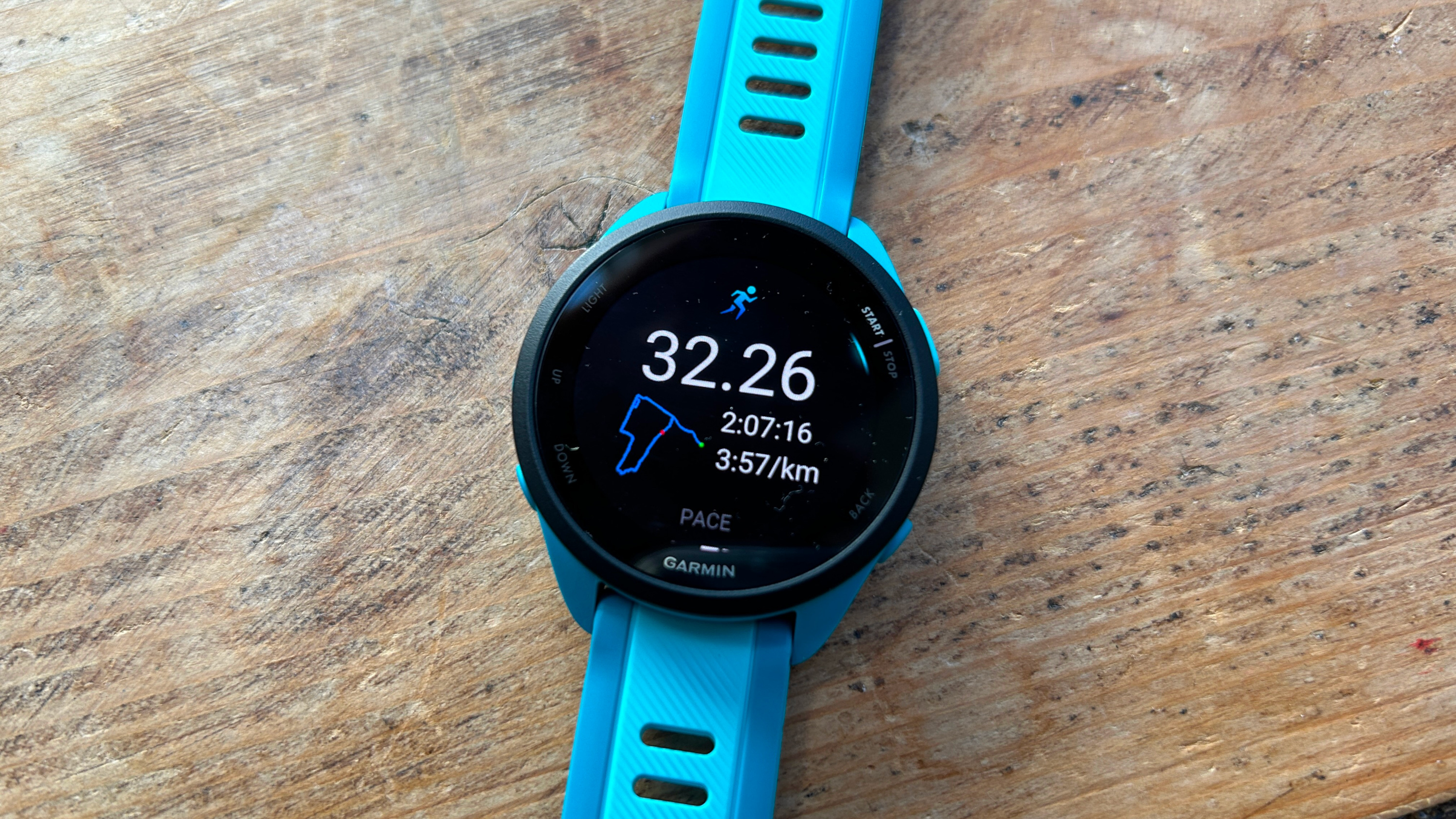
While the Forerunner 165 does not offer Garmin’s dual-band GPS tracking, which I have found to be the most accurate from any brand, it does have an all-systems-on tracking mode as well as a basic GPS-only mode which can extend battery life.
I used the all-systems-on mode throughout my testing, comparing it against the Garmin Epix Pro in multi-band mode. Overall the Forerunner 165 was highly accurate, closely matching the Epix Pro on every run including some under tree cover.
I found it tended to overestimate distance slightly and was a little generous with my pace as a result, and looking at GPS tracks this would be down to it tracking a wider path around corners at times, but overall this was marginal. In a week where I logged 77.1 miles on the Epix Pro, the Forerunner 165 logged 77.6 miles.
The heart rate tracking, unfortunately, was less impressive. On most of my runs the Forerunner 165’s optical heart rate sensor would log an erroneously high heart rate compared with the Polar H10 chest strap, including for the entirety of a 20-mile run where it locked on to my cadence instead of my heart rate.
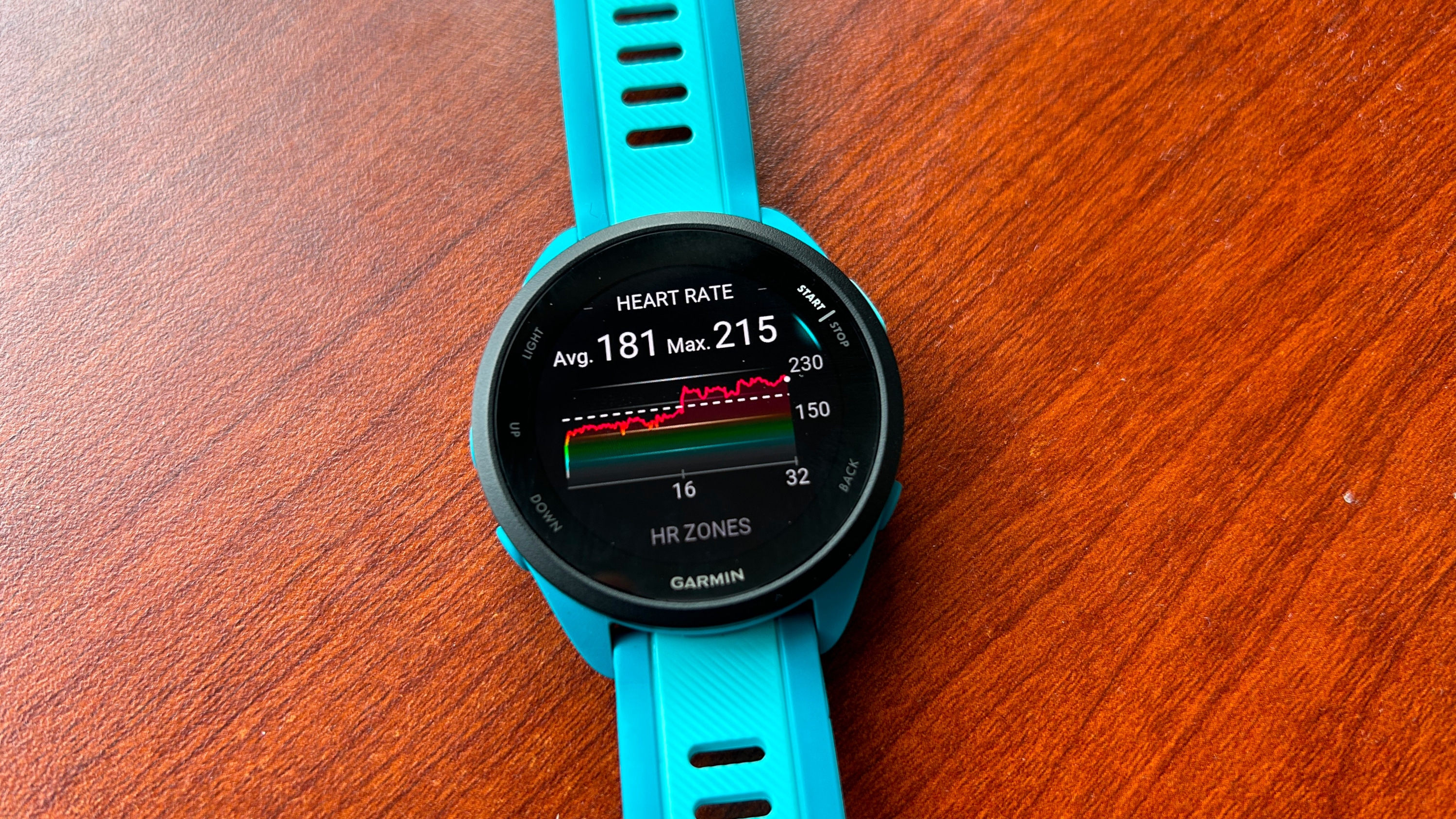
This skews the limited training analysis on the watch, so if you intend on using that or to train using heart rate, it would be best to link a chest strap.
Navigation
The Forerunner 165 offers breadcrumb navigation, which is a feature you don’t get on the cheaper Forerunner 55 running watch. Create a course in the Garmin Connect and send it to the watch to get a line and pointer, plus turn-by-turn directions. You can also activate the back-to-start feature during an outdoor activity to get a pointer and the distance back to your start point.
I have always found Garmin’s breadcrumb navigation sufficient to guide me through runs in unfamiliar places. It’s not as easy to follow the route as when using a Garmin watch with full maps, but those are much more expensive.
Battery Life
Both Forerunner 165 models are listed as lasting up to 11 days in watch mode, and offer 19 hours of GPS. Judging by my testing, this GPS stat is based on using the more energy-intensive all-systems-on tracking, because I found the watch drained by around 5% an hour when tracking runs in that mode.
The battery life comes down if you turn the screen to always-on, which I did during my testing. My Forerunner 165 lasted four to five days on a charge when running, on average, for at least an hour a day—but I didn’t have notifications coming into the watch, which will reduce battery life a little.
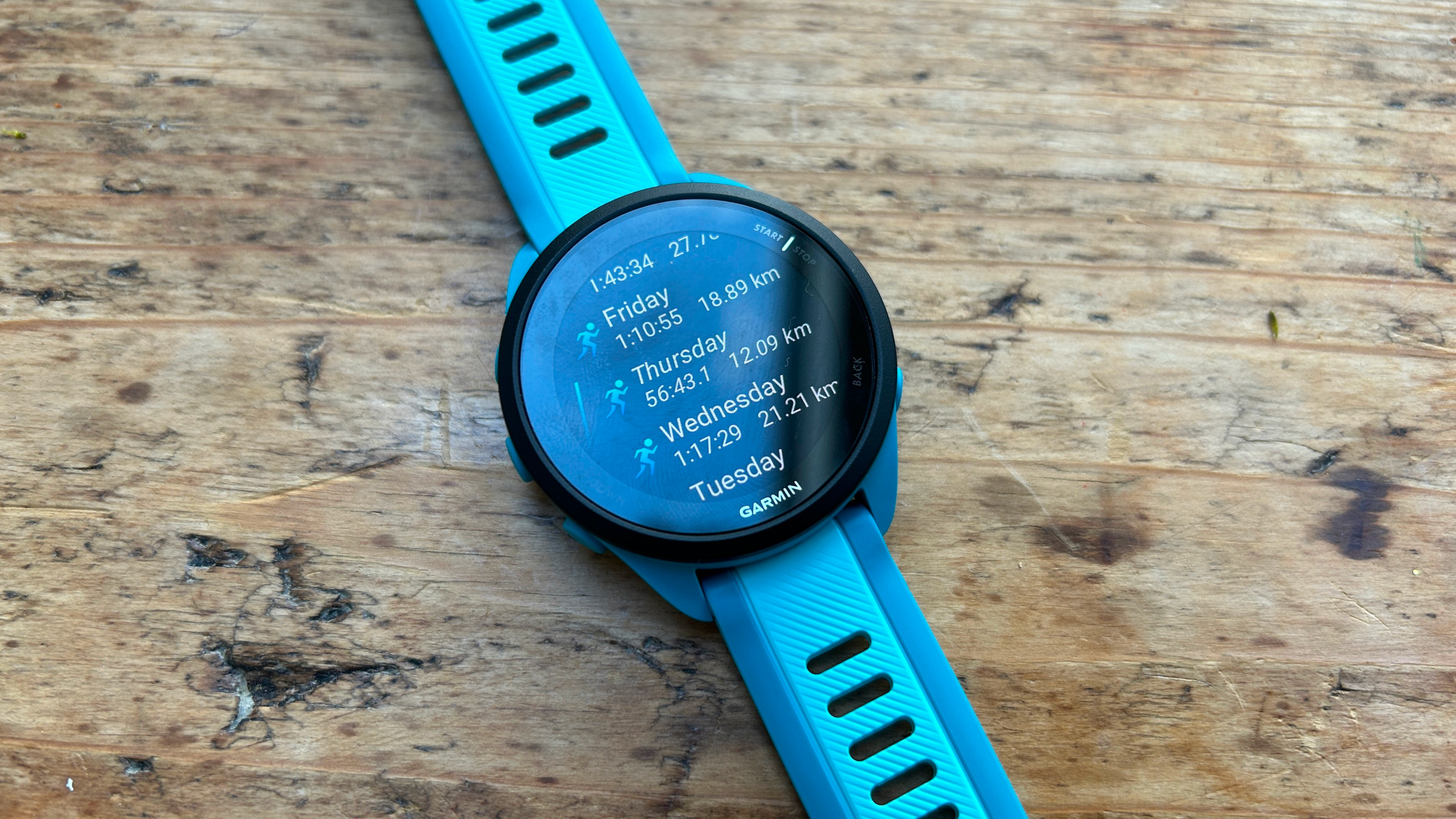
Setting the screen to raise-to-wake outside workouts will extend the battery life considerably, and the screen does wake quite quickly and reliably with a turn of the wrist.
Even with the screen always on and running every day, the battery life on the Forerunner 165 is pretty impressive for a small watch with a bright AMOLED display. Even with heavy use, it outlasts the best fitness smartwatches by a couple of days. If charging every four or five days is too much for you it’s easy to extend the life beyond that by disabling the always-on screen.
Smart Features
Both models of the Garmin Forerunner 165 offer notifications, access to the Connect IQ app store and NFC payments through Garmin Pay, and the Forerunner 165 Music also has music storage.
As with all Garmins with music, the Forerunner 165 works with paid-for Spotify, Deezer and Amazon Music accounts, allowing you to wirelessly sync across your music for offline playback on the watch. It has 4GB of storage available, half the 8GB on the Forerunner 265, but still enough room for a lot of music.
The app store is limited and the Forerunner 165 doesn’t offer cellular connectivity, so it’s not a true smartwatch like the Apple Watch Series 9, but the smart features here are better than you get from any other sports watch.
Activity And Sleep Tracking
The Garmin Forerunner 165 is very good as a daily activity tracker, logging your steps, calories, floors climbed and active minutes each day. It also has a pulse oximeter to measure your blood oxygen saturation, and will track your heart rate variability at night and plot it against your baseline once this has been established.
It also tracks naps as well as sleep, and gives you a sleep score for the latter plus your sleep stages and time in REM, deep and light sleep. While it doesn’t offer Garmin’s training readiness score, the Forerunner 165 does have the brand’s body battery feature, which rates your energy levels out of 100.
As with all Garmin watches I’ve tested, I found the Forerunner 165 was a little generous with its sleep tracking, missing periods where I was awake during the night and logging them as light sleep. I usually found it logged 30-60 more minutes as time asleep in total than the third-generation Oura ring measured, but the heart rate variability tracking numbers did largely agree with the Oura ring each night, and you can use those to judge the overall state of your body and your readiness to train each morning.
Is The Garmin Forerunner 165 Worth It?
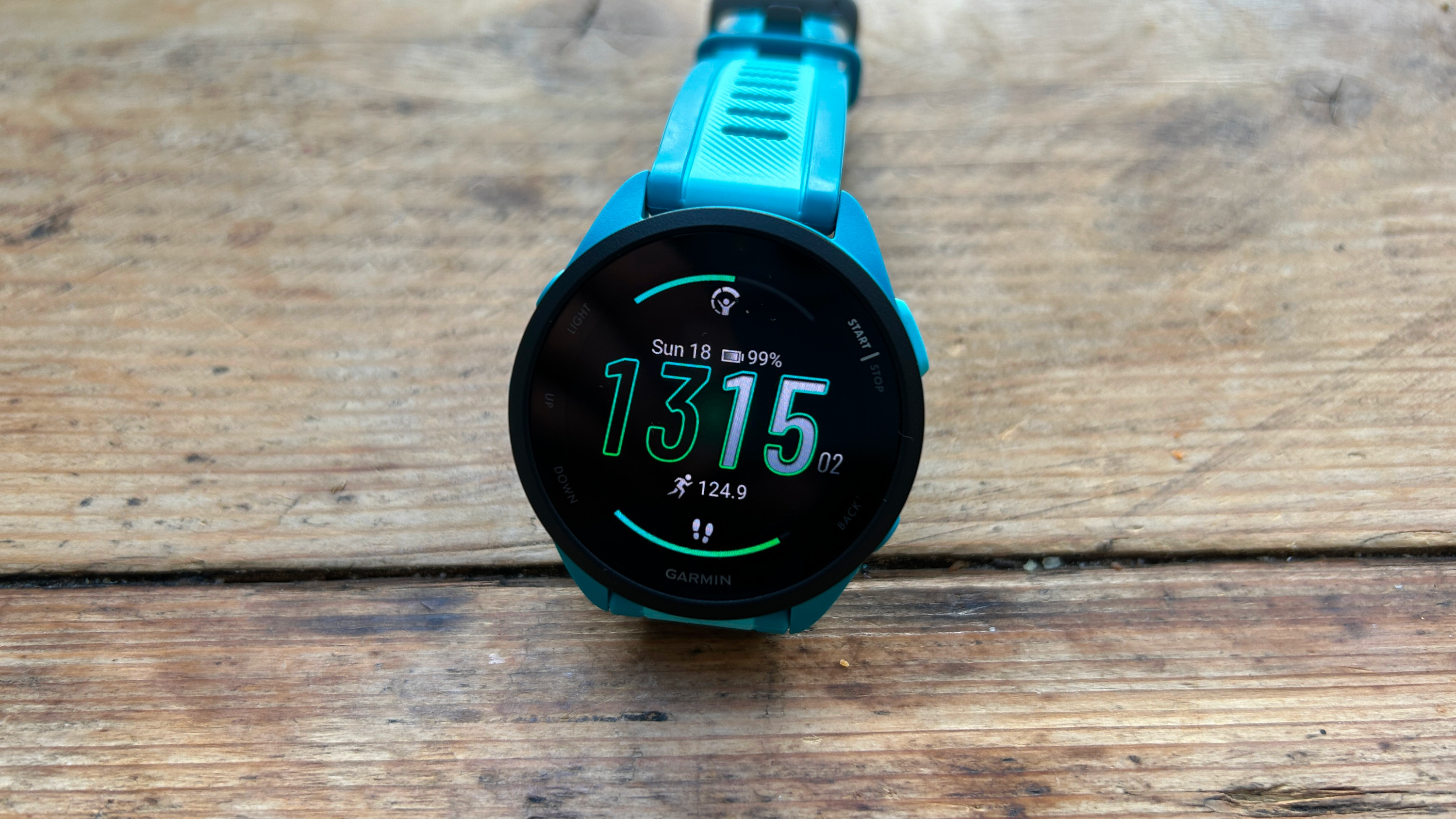
The Garmin Forerunner 165 is an excellent running watch and while it’s not exactly cheap, it is a lot more affordable than Garmin’s other AMOLED sports watches. Whether it’s the best value sports watch for runners or not depends on how highly you value its bright display.
The main competition for the 165 comes from the Coros Pace 3 and Garmin Forerunner 255, but both have LCD screens. However, both those watches are a little cheaper and offer dual-band GPS and more insightful training analysis, and the Coros has significantly longer battery life too. The GPS tracking and training analysis on the Forerunner 165 was good enough in my testing, and I didn’t find its battery life annoyingly short, so I’d say the value you place on the screen and price are the key considerations. Unless you’re a triathlete, that is—the Pace 3 and Forerunner 255 have a multisport mode and the 165 doesn’t.
The Forerunner 165 is certainly a compelling alternative to the Forerunner 265, which is a lot more expensive. The 265 is undoubtedly a better watch and offers different size options and additional features like training readiness, but the extras it offers over the 165 won’t be required by everyone.
Compared with the Garmin Vivoactive 5 and Venu 3 smartwatches, the Forerunner 165 offers more sports features and training analysis, as well as more buttons for ease of use during workouts. I found the Vivoactive 5 a good sporty smartwatch, but the Forerunner 165 has proven more accurate and useful as a sports watch and has similar smart features.

Nick Harris-Fry is a journalist who has been covering health and fitness since 2015. Nick is an avid runner, covering 70-110km a week, which gives him ample opportunity to test a wide range of running shoes and running gear. He is also the chief tester for fitness trackers and running watches, treadmills and exercise bikes, and workout headphones.

